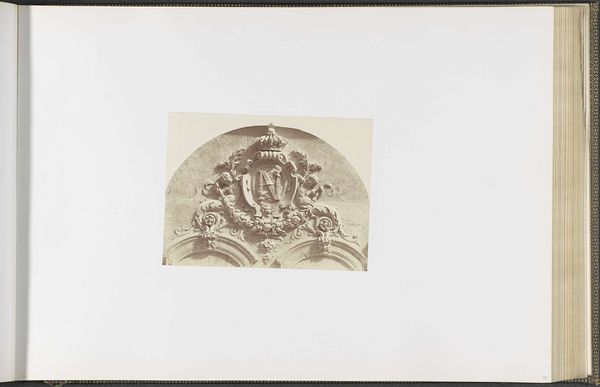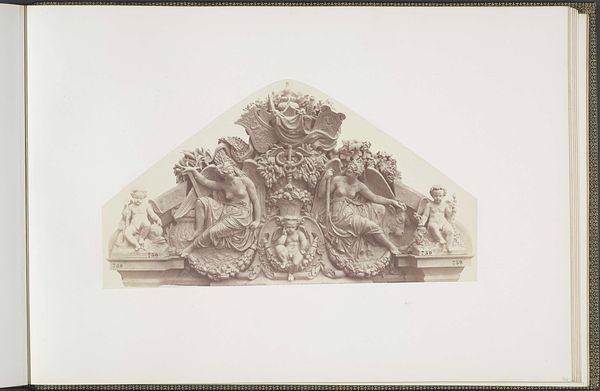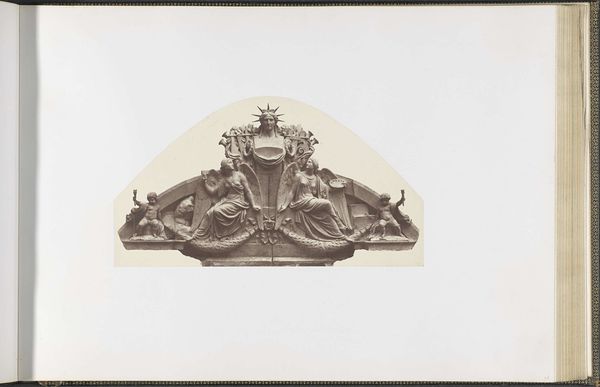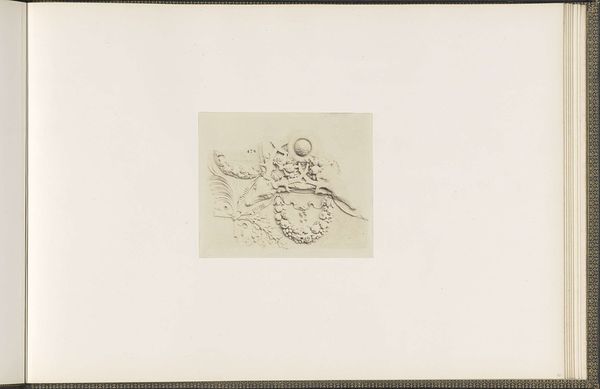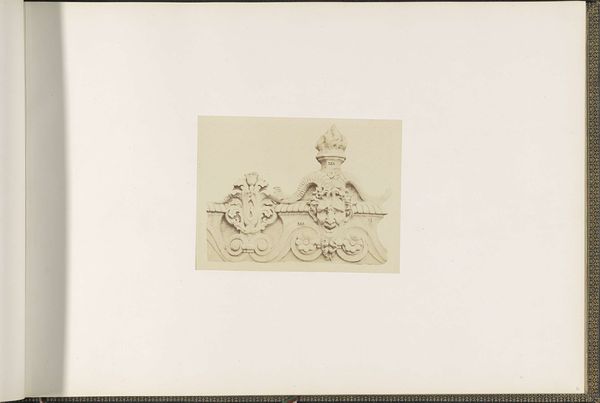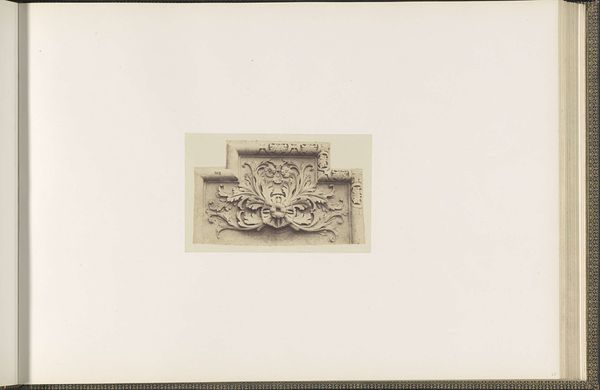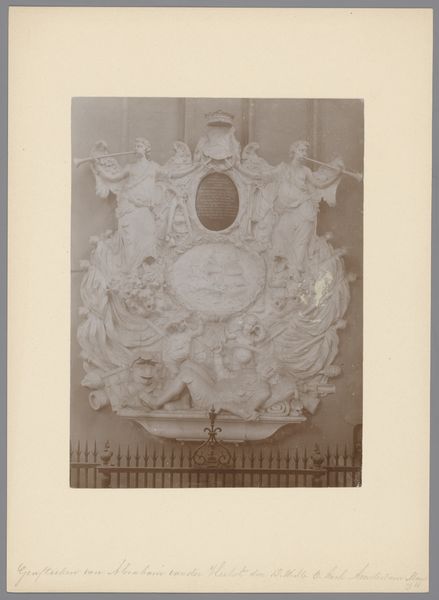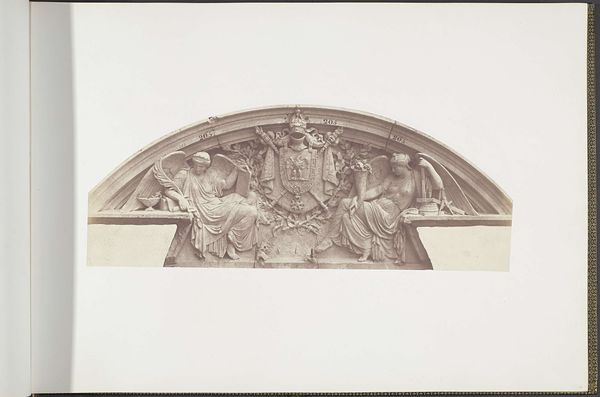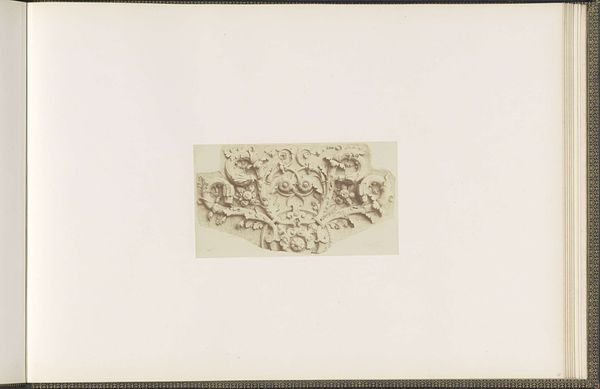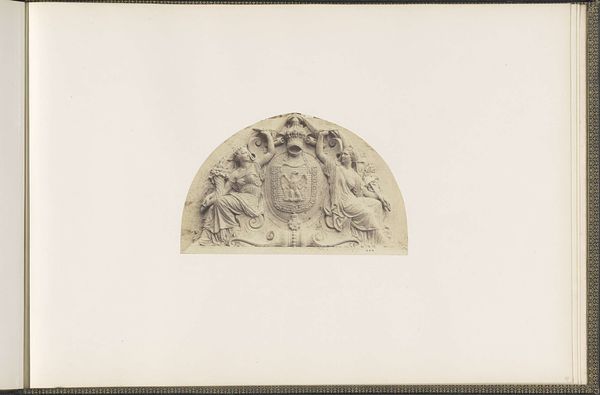
Gipsmodel voor het fronton van zijdeuren van het Palais du Louvre door Jean-Baptiste Revillon c. 1855 - 1857
0:00
0:00
print, photography
#
neoclacissism
# print
#
landscape
#
photography
#
academic-art
Dimensions: height 376 mm, width 523 mm
Copyright: Rijks Museum: Open Domain
Editor: Here we have a print of "Gipsmodel voor het fronton van zijdeuren van het Palais du Louvre door Jean-Baptiste Revillon", taken sometime between 1855 and 1857 by Edouard Baldus. It's very…formal. Like you'd see this sculpture on a bank, almost. What can you tell me about this? Curator: Well, let's start with the obvious: this is a photograph *of* a plaster model. Think about that. Photography, a relatively new industrial process at this point, is being used to document another mode of production, sculpture, destined for architectural implementation. It's all about layers of labor and the material process, isn't it? Editor: I hadn’t thought about it that way! More like a record of a pretty thing. Curator: Precisely! But what is the role of photography here? Baldus isn't just capturing art; he's participating in a much wider system. The image becomes reproducible, a commodity itself. Also, where was this print sold or viewed, and to whom? Those questions will affect how we consider this work of art. Editor: Good question! So you're less concerned with the neoclassical style and more interested in... how this object *came to be*. Curator: Exactly. Think about the workers involved. Who quarried the stone for the Louvre, who mixed the plaster for the model, and who took and developed the photograph? The image prompts considerations of industrialization. These architectural elements imply and even rely on mass production to achieve grandeur and wide admiration. Editor: That makes a lot of sense. All that effort! The idea of art creation shifts away from pure genius and into broader modes of working. Curator: Indeed. This one photo, with many steps, illustrates the broader production economy happening in nineteenth-century France. Editor: Okay, I see your point entirely. Thinking of photography as documenting another aspect of labour…I will carry that. Curator: That is my goal! Now let us move on to another item.
Comments
No comments
Be the first to comment and join the conversation on the ultimate creative platform.
